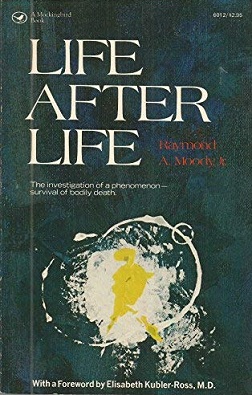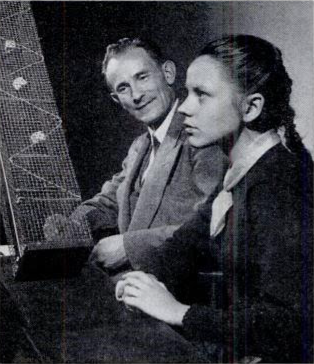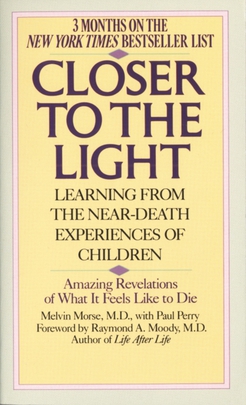
Parapsychology is the study of alleged psychic phenomena and other paranormal claims, for example, those related to near-death experiences, synchronicity, apparitional experiences, etc. Criticized as being a pseudoscience, the majority of mainstream scientists reject it. Parapsychology has also been criticised by mainstream critics for claims by many of its practitioners that their studies are plausible despite a lack of convincing evidence after more than a century of research for the existence of any psychic phenomena.

Frederic William Henry Myers was a British poet, classicist, philologist, and a founder of the Society for Psychical Research. Myers' work on psychical research and his ideas about a "subliminal self" were influential in his time, but have not been accepted by the scientific community. However, in 2007 a team of cognitive scientists at University of Virginia School of Medicine, led by Edward F. Kelly published a major empirical-theoretical work, Irreducible Mind, citing various empirical evidence that they think broadly corroborates Myer's conception of human self and its survival of bodily death.

Life After Life is a 1975 book written by psychiatrist Raymond Moody. It is a report on a qualitative study in which Moody interviewed 150 people who had undergone near-death experiences (NDEs). The book presents the author's composite account of what it is like to die, supplemented with individual accounts. On the basis of his collection of cases, Moody identified a common set of elements in NDEs:

An out-of-body experience is a phenomenon in which a person perceives the world from a location outside their physical body. An OBE is a form of autoscopy, although this term is more commonly used to refer to the pathological condition of seeing a second self, or doppelgänger.

Paul Kurtz was an American scientific skeptic and secular humanist. He has been called "the father of secular humanism". He was Professor Emeritus of Philosophy at the State University of New York at Buffalo, having previously also taught at Vassar, Trinity, and Union colleges, and the New School for Social Research.
Betty (Jean) Eadie is a prominent American author of several books on near-death experiences (NDEs). Her best-known book is the number 1 New York Times bestselling book Embraced by the Light, (1992) describing her NDE. It was followed by The Awakening Heart (1996), which was also a best-seller. The Ripple Effect (1999) and Embraced by the Light: Prayers and Devotions for Daily Living (2001) were both published independently.
Near-death studies is a field of psychology and psychiatry that studies the physiology, phenomenology and after-effects of the near-death experience (NDE). The field was originally associated with a distinct group of North American researchers that followed up on the initial work of Raymond Moody, and who later established the International Association for Near-Death Studies (IANDS) and the Journal of Near-Death Studies. Since then the field has expanded, and now includes contributions from a wide range of researchers and commentators worldwide. Research on near-death experiences is mainly limited to the disciplines of medicine, psychology and psychiatry.
Erlendur Haraldsson was a professor emeritus of psychology on the faculty of social science at the University of Iceland. He published in various psychology and psychiatry journals. In addition, he published parapsychology books and authored a number of papers for parapsychology journals.
In parapsychology and spiritualism, a psychomanteum is a small, enclosed area set up with a comfortable chair, dim lighting, and a mirror angled so as not to reflect anything but darkness intended to communicate with spirits of the dead.
George G. Ritchie was an American psychiatrist who held positions as president of the Richmond Academy of General Practice; chairman of the Department of Psychiatry of Towers Hospital; and founder and president of the Universal Youth Corps, Inc. for almost 20 years. In 1967 he entered private psychiatry practice in Charlottesville, Virginia, and in 1983 moved to Anniston, Alabama, to serve as head of the Department of Psychiatry at the Northeast Alabama Regional Medical Center. He returned to Richmond in 1986 to continue in private practice until retirement in 1992.
Pam Reynolds Lowery, from Atlanta, Georgia, was an American singer-songwriter. In 1991, at the age of 35, she stated that she had a near-death experience (NDE) during a brain operation performed by Robert F. Spetzler at the Barrow Neurological Institute in Phoenix, Arizona. Reynolds was under close medical monitoring during the entire operation. During part of the operation she had no brain-wave activity and no blood flowing in her brain, which rendered her clinically dead. She claimed to have made several observations during the procedure which medical personnel reported to be accurate.
A near-death experience (NDE) is a profound personal experience associated with death or impending death which researchers describe as having similar characteristics. When positive, which the great majority are, such experiences may encompass a variety of sensations including detachment from the body, feelings of levitation, total serenity, security, warmth, joy, the experience of absolute dissolution, review of major life events, the presence of a light, and seeing dead relatives. When negative, such experiences may include sensations of anguish, distress, a void, devastation, vast emptiness, seeing hellish places and "the devil".
In psychology, anomalistic psychology is the study of human behaviour and experience connected with what is often called the paranormal, with few assumptions made about the validity of the reported phenomena.
Peter Brooke Cadogan Fenwick is a neuropsychiatrist and neurophysiologist who is known for his studies of epilepsy and end-of-life phenomena.

Deathbed phenomena refers to a range of experiences reported by people who are dying. There are many examples of deathbed phenomena in both non-fiction and fictional literature, which suggests that these occurrences have been noted by cultures around the world for centuries, although scientific study of them is relatively recent. In scientific literature such experiences have been referred to as death-related sensory experiences (DRSE). Dying patients have reported to staff working in hospices they have experienced comforting visions.

Melvin L. Morse is an American medical doctor who specializes in pediatrics. He has authored several books and articles on paranormal science and near-death experiences in children, including the 1987 New York Times bestseller Closer to the Light, written jointly with Paul Perry, and with a foreword written by Raymond Moody. Morse has authored many journal articles, and has given media interviews on the subject of near death experiences.

Karlis Osis was a Latvian-born parapsychologist who specialised in exploring deathbed phenomena and life after death.
Paul Perry is the co-author of several New York Times bestsellers, including Evidence of the Afterlife, Closer to the Light, Transformed by the Light, and Saved by the Light which was made into a popular movie by Fox. His books have been published in more than 30 languages around the world and cover a wide variety of subjects from near-death experiences to biographies of authors Ken Kesey and Hunter S. Thompson.
Jeffrey Long is an American author and researcher into the phenomenon of near-death experiences (NDEs). A physician by training, Long practices radiation oncology at a hospital in Louisiana. Long is the author of Evidence of the Afterlife: The Science of Near-Death Experiences, which appeared on The New York Times Best Seller list. In 1998, he founded the Near Death Experience Research Foundation, which is concerned with documenting and researching NDEs.

Closer to the Light: Learning from the Near-Death Experiences of Children is a 1991 nonfiction book written by Melvin L. Morse and Paul Perry with foreword written by Raymond Moody. The book documented the near-death experiences (NDEs) of 26 children and became a New York Times bestseller.









